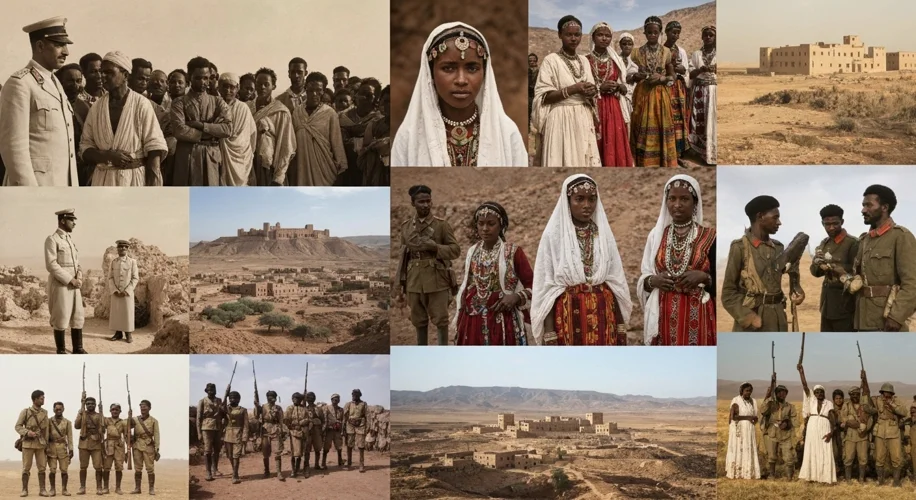The sun beat down on the arid plains of Libya, a land already ancient when Rome first cast its ambitious gaze southwards. For centuries, the whispers of empires echoed across the Mediterranean, but it was the burgeoning ambitions of a unified Italy in the late 19th and early 20th centuries that would indelibly mark the destinies of several African nations.
Italy, a nation born late to the European scramble for colonies, felt a keen urgency to carve out its own sphere of influence. Fueled by a potent mix of national pride, a desire for economic expansion, and a misplaced sense of civilizing mission, Italy targeted territories in North and East Africa. Thus began a colonial chapter, characterized by a distinct blend of assimilationist policies, brutal repression, and ultimately, an enduring legacy that continues to shape the socio-political and economic landscapes of Libya, Eritrea, Somalia, and Ethiopia.
The colonial venture was not a monolithic endeavor. In Libya, colonized from 1911 after a war against the Ottoman Empire, Italian rule was marked by a protracted and violent struggle against fierce resistance, particularly from Libyan tribes. Figures like Omar Mukhtar, the “Lion of the Desert,” became potent symbols of defiance, leading a protracted guerrilla war against the Italian forces. The colonial administration, under figures like Benito Mussolini, implemented policies aimed at consolidating control, often through brutal means, including the use of concentration camps and mass deportations, particularly in Cyrenaica.

In the Horn of Africa, Italy’s colonial presence began earlier. Eritrea, occupied in the 1880s, became a key strategic outpost. Somalia, divided into British and Italian spheres, saw Italian Somaliland administered with a focus on agricultural development and the imposition of Italian law. Ethiopia, however, remained a stubborn outlier. Despite a devastating defeat at the Battle of Adwa in 1896, where Ethiopian forces under Emperor Menelik II decisively repelled an Italian invasion, Italy’s imperial ambitions were only temporarily thwarted. In 1935, under Mussolini’s fascist regime, Italy launched a new, unprovoked invasion, employing modern weaponry, including chemical agents, to conquer Ethiopia. This brutal conquest, often referred to as the Second Italo-Ethiopian War, was a stark reminder of the stark power imbalance between European colonial powers and African nations, even as the world largely stood by.

The colonial project, while aimed at bolstering Italian prestige and economy, often proved to be a double-edged sword. Economically, colonies were intended to be sources of raw materials and captive markets. However, the Italian colonial economy was never as robust as initially envisioned. Investment was often concentrated in infrastructure supporting military control and resource extraction rather than fostering broad-based local development. Furthermore, the imposition of Italian language and administrative structures often created cultural and social dislocations, alienating local populations and undermining indigenous institutions.
The legacy of these colonial encounters is complex and multifaceted. In Libya, the arbitrary colonial borders, drawn with little regard for ethnic or tribal realities, contributed to post-independence challenges in national cohesion. The legacy of repression and the memory of colonial violence continued to cast a long shadow, influencing internal political dynamics for decades.
In Eritrea and Somalia, Italian rule left behind a linguistic and cultural imprint, evident in certain architectural styles, legal frameworks, and even some culinary traditions. However, the post-colonial period was marked by instability, civil wars, and the struggle to forge national identities in the wake of disrupted traditional structures. The fragmentation of Somalia, in particular, can be traced, in part, to the artificial borders and the uneven development fostered during the colonial era.
Ethiopia’s experience with Italian colonialism, though shorter in its second, brutal phase, left deep psychological and political scars. The memory of the occupation, the use of chemical weapons, and the fight for liberation became central to modern Ethiopian national identity. The struggle against Italian fascism, however, also provided a potent symbol of African resistance and a rallying point for anti-colonial sentiments across the continent.
Ultimately, the story of Italy’s former colonies is not just a tale of conquest and control, but one of resilience, resistance, and the enduring quest for self-determination. The historical factors that contributed to the challenges faced by these nations – the imposition of arbitrary borders, the economic exploitation, the suppression of local cultures, and the brutal tactics employed by the colonial power – are crucial for understanding their present-day realities. The echoes of Italy’s colonial past continue to resonate, a testament to the profound and lasting impact of the imperial age on the African continent.

